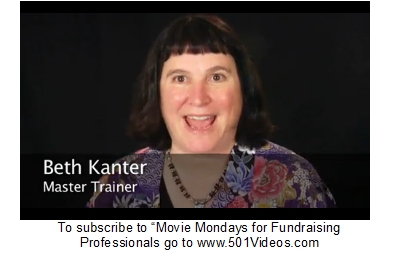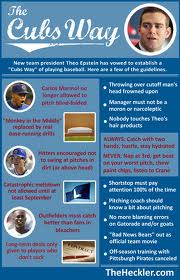 Let’s pick-up where we left off a few days ago from my post titled “Does your non-profit culture suffer from tyranny of the urgent?” In that post, I talked about an idea some experts have named the “tyranny of the urgent,” which is simply when you prioritize urgent tasks over important tasks. I extrapolated this idea to an organization-wide scale and talked about how this could become part of your organizational culture and the consequences of it occurring. Today, I will share a few suggestions on how to start addressing this organizational cancer.
Let’s pick-up where we left off a few days ago from my post titled “Does your non-profit culture suffer from tyranny of the urgent?” In that post, I talked about an idea some experts have named the “tyranny of the urgent,” which is simply when you prioritize urgent tasks over important tasks. I extrapolated this idea to an organization-wide scale and talked about how this could become part of your organizational culture and the consequences of it occurring. Today, I will share a few suggestions on how to start addressing this organizational cancer.
Hmmmm? So, where was I? Oh right, I ended the last post by quoting Forbes’ Steve Denning who once wrote:
“… an organization’s culture comprises an interlocking set of goals, roles, processes, values, communications practices, attitudes and assumptions.”
In other words, organizational culture is complicated in and of itself.
Now you add the idea of “CHANGE” into the equation and the degree of difficulty goes up exponentially. I can confidently say this based on the following two facts:
Fact #1: If you Google the search words “how to change organizational culture,” you are showered with lots of links to stories with people talking about how they successfully changed their organization’s culture. As you start reading, you find lots of stories with lots of different approaches and very few common threads.
Fact #2: If you Google the search words “change initiative failure rate,” you will find the same thing being said over and over again. Everyone seems to agree that on average 70% of workplace change initiatives “FAIL.”
What am I trying to say here?
Simply, all of this is complicated, layered and unique. With this out in the open, I’m just going to confess that I do not have a one-size-fits-all blogosphere easy solution for you. Sorry! However . . .
I will share some of what I’ve seen help reduce/eliminate the tyranny of the urgent from my former workplaces. Hopefully, by doing so, this blog post will get you moving in the right direction or at the very least stimulate productive conversations with co-workers and volunteers on your end.
Investing in a culture of planning
 When I worked for the Boy Scouts of America (BSA) in the late-1990s, there was a focused effort to stave off the tyranny of the urgent through the following strategies:
When I worked for the Boy Scouts of America (BSA) in the late-1990s, there was a focused effort to stave off the tyranny of the urgent through the following strategies:
- Every scout professional was required to use a Franklin Planner system (of which the council underwrote the cost)
- Woven into my new employee orientation was a training on how to use the planner (e.g. setting expectations)
- Use of the planner was integrated into staff meetings (e.g. using the tool became procedural and habitual)
- Annual staff planning retreats were the norm (e.g. planning was structurally built into the calendar)
- It was an expectation that every employee develop what was called a “backdating plan” for every district event (in fact, every employee was issued a tool that looked like a wheel to help with the math of backdating)
- Employees were strongly encouraged to take an entire workday once a month, which was called a “day of planning,” to do activities like setting up next month’s meetings, tying up loose ends (e.g. catching up on writing meeting notes, completing expense reports, reviewing your performance plan and calendarizing strategic action to achieve goals, etc)
- Employees who were not good about taking their day of planning once a month, ended up with this added to next year’s annual performance plan
- In addition to a monthly “day of planning,” employees were encouraged to spend one hour at the start of the week (or at the end of the previous week) to review upcoming appointments, break apart big projects into smaller tasks, prioritize every task in relationship to each other, etc
- As if all this wasn’t enough, employees were encouraged to end every day with a short exercise whereby incomplete tasks were moved forward to the next day (and subsequently re-prioritized in relation to one another)
I’ve heard some people call this experience insane. I go back and forth on it. However, I can confidently say it helped address the issue of the “tyranny of the urgent.”
Yep, you heard me right . . . I didn’t say the BSA’s “culture of planning” single-handedly solved anything. (Again, I refer you back to the beginning of the post where I qualified everything up the ying-yang by saying this is complicated stuff.)
I still saw periods of time at my Boy Scout council when “tyranny of the urgent” reigned. This was usually around an annual campaign deadline, the start of camping season, or year-end membership pushes.
People, systems, plans & structural alignment
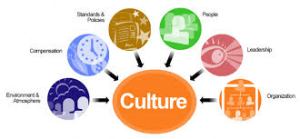 Changing your organizational culture (or at the very least rooting out tyranny of the urgent) will also likely require some combination of the following:
Changing your organizational culture (or at the very least rooting out tyranny of the urgent) will also likely require some combination of the following:
- modeling behavior by senior leadership (and possibly flexing leadership styles)
- creating positive/negative reward systems
- hiring people with skills and experiences aligned with the desired culture shift
- redistributing financial resources into whatever is deemed transformative activities (e.g. training costs, purchasing new tools, increased pay grades to attract different people to your applicant pool, etc)
- aligning every single plan throughout the organization with a single, shared vision and shared values
- creating or revising certain policies or procedures
- developing new monitoring/reporting tools and using these tools to be transparent with everyone who is connected together by organizational culture
Choosing & using a change model
Creating a plan for change is not enough. If it were, then the success rate of change initiatives in the workplace would be a lot higher than 30%.
Unfortunately, I’ve seen lots of different change leadership models out there. My best suggestion is to:
- choose a model and stick with it
- empower your change team to run with it
- invest in helping your team learn the model and all of the tools that come with it (e.g. workshops, materials, etc)
If you’re having a hard time wrapping your head around what I mean by a change leadership model, then you might want to check out Mitchell Nash’s blog post for Linkage Inc, which is titled “12 Steps to Organizational Change: A Checklist.”
Behind each of the 12 steps, there are tools to assist with successfully achievement. Of course, those tools aren’t in Nash’s blog. You need to pay for that training with Linkage. Having been through Linkage’s Change Leadership workshop twice while working for a former employer, I assure you that your experience will be punctuated with many “AH-HA” moments.
Have you ever worked for a non-profit where the tyranny of the urgent was part of the organization’s culture? If so, how did they try to address it? Did it work? If they did nothing, what were the consequences (or were there none)? Please use the comment box to share your thoughts and experiences. Why? Because we can all learn from each other.
Here’s to your health!
Erik Anderson
Founder & President, The Healthy Non-Profit LLC
www.thehealthynonprofit.com
erik@thehealthynonprofit.com
http://twitter.com/#!/eanderson847
http://www.facebook.com/eanderson847
http://www.linkedin.com/in/erikanderson847

 Simply, this idea is rooted in the idea that urgent tasks trump important things, which results in consequences for individuals and organizations.
Simply, this idea is rooted in the idea that urgent tasks trump important things, which results in consequences for individuals and organizations. I looked around for diagnostic and evaluation tools failed to find anything. Perhaps, I’m using the wrong internet search words or maybe I’m looking in the wrong places. If anyone has seen anything, please share using the comment box on this blog. I’m very interested.
I looked around for diagnostic and evaluation tools failed to find anything. Perhaps, I’m using the wrong internet search words or maybe I’m looking in the wrong places. If anyone has seen anything, please share using the comment box on this blog. I’m very interested. Again, I go back to what Hummel tells us in his writings. The consequence is simple … “We have done those things which we ought not to have done, and we have left undone those things which we ought to have done.”
Again, I go back to what Hummel tells us in his writings. The consequence is simple … “We have done those things which we ought not to have done, and we have left undone those things which we ought to have done.”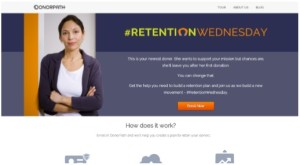
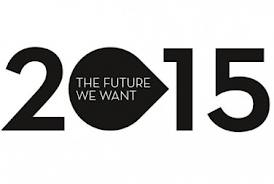 So, I guess I’m feeling a little bah-humbug about the entire idea of #RetentionWednesday. If I were king for a day (a scary thought), I would decree 2015 “The Year of Retention“.
So, I guess I’m feeling a little bah-humbug about the entire idea of #RetentionWednesday. If I were king for a day (a scary thought), I would decree 2015 “The Year of Retention“.